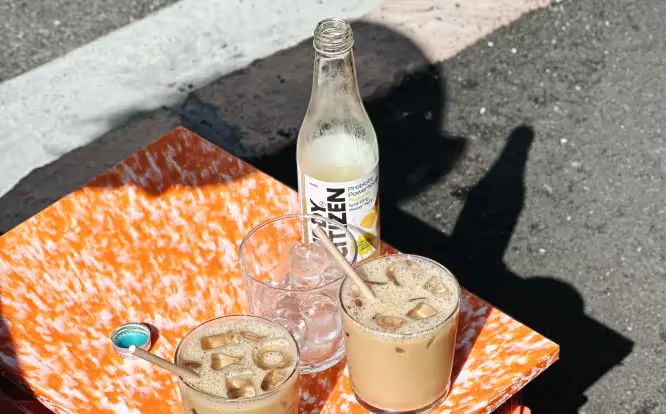Velosure’s Nutritional Guide for Beginners
If youâve just started cycling, figuring out what to eat and drink can be a pretty daunting task. If you look online or even ask around at your next group ride, youâre likely to get loads of conflicting information on everything from nutrition plans to products to advice. So how do you figure out whatâs really best for you? When figuring out your nutrition and hydration needs, remember to take everything with a pinch of salt â including this blog! Whatâs best for you will come down to your fitness level, age, gender, weight, how hard you train, and a million other factors. If youâre a beginner, you probably donât need to see a sports nutritionist while youâre just getting started unless youâre working with an illness or specific dietary requirements. But if seeing a nutritionist helps you feel more prepared and confident about getting into cycling then by all means book an appointment! What is Sports Nutrition?
â

If youâre just getting into cycling, youâll probably hear a lot of things youâve never heard in mainstream diet culture â the dreaded bonk, carbo-loading, energy gels, and so on â itâs enough to make your head spin. Remember, sports nutrition is a whole different beast to daily nutrition or diets optimised for weight loss. Instead of making you look a certain way, sports nutrition is designed to make you perform a certain way. For pro-level athletes, this will mean careful eating plans focusing on macronutrients at specific times of the day, but for beginners it may just mean taking an energy-dense snack along on a ride. While knowledge is power, sports nutrition is a complex science so you donât need to overwhelm yourself by trying to go from zero to one hundred in a week. Rather, learn as you go, see what helps you feel and perform at your best, and forgive yourself readily if you eat or drink something thatâs not in your plan. As you become more experienced and knowledgable, youâll get a good feel for what works best for you.
Basic Nutrition Tips for Beginner Cyclists
If you dislike a specific type of food, itâs going to be difficult to stick to a eating plan that contains a lot of that food, so start by creating a list of all the foods you enjoy from the following categories:
- Fruit and vegetables (e.g. avocado, tomatoes, spinach)
- Protein (e.g. chicken, seafood, eggs)
- Carbohydrates (e.g. bread, rice, pasta)
- Other (e.g. chocolate, granola bars, sweets)
Youâll want the majority of your daily diet to fall into the first three categories, and less that fall into the âOtherâ category. When it comes to your cycling, what you should eat depends on how long youâll be riding for. For example, if youâre going on a one-hour early morning ride youâll wake up in a fasted state. Whether or not you should eat something depends completely on how you feel â if your stomach is already grumbling, you can eat a banana or some nuts. If youâre bright eyed and bushy tailed, you can wait until after your ride to break your fast and eat. For easy rides one hour and under, you donât need to drink anything but water. Remember, donât eat a heavy meal before a ride! If youâre going on a two hour ride with some challenging climbs, you should eat a snack 1 â 2 hours before your ride, and bring a water and an electrolyte-rich drink with you. For rides that are longer or more gruelling, youâll want to bring some snacks (e.g. energy gels, granola bars, nuts) along too. For beginners, itâs recommended that you bring along a small snack for any ride lasting over an hour. If you donât feel that you need it, you donât have to eat it but itâs a great way to learn how long you can ride before you need an extra boost of energy.
â
What Does âBonkingâ Mean?

If youâve been reading up on cycling nutrition online or talking to cyclists, itâs likely that youâve come across the term âbonkingâ. It sounds funny, but can be quite serious and even dangerous. Bonking happens when your body has depleted its glycogen stores, leaving you feeling weak and fatigued. You may feel dizzy, your legs may start to cramp, and you may feel overwhelmed. In short, itâs every cyclistâs worst nightmare! Because bonking comes down to not having enough carbohydrates for your body to run on, the natural answer is to increase your carbohydrate intake. Hereâs the tricky part: Itâs not quite realistic to cycle with a tupperware of rice or pasta. This is why cyclists often carry energy gels and sports drinks along on a ride, or sometimes even a sandwich or pretzel. If you experience the dreaded bonk, the most important thing to do is ingest some food and liquids. If youâve forgotten to bring along a snack, donât be embarrassed to ask another cyclist â bonking has happened to almost everyone! How long itâll take you to recover depends on a lot of factors, and the answer is anywhere from âA few minutesâ to âCall a friend or family member to come fetch you.â If youâve eaten and drank something and still donât feel quite right, donât push yourself to keep pedalling. A safe recovery should be your main priority; sometimes you just have to throw in the towel and tackle the ride another day. Before you pedal off into the sunset (or sunrise) armed with our nutrition and hydration tips, is your bicycle also covered for your next ride?
Sign up with Velosure for cover against theft, malicious damage, worldwide cover and more so you can ride with ultimate peace of mind.










